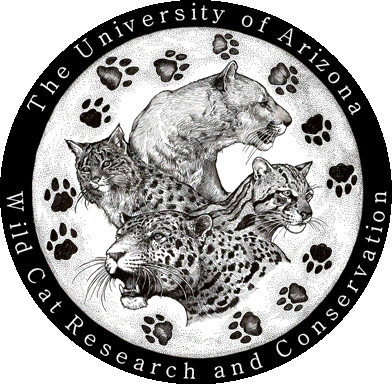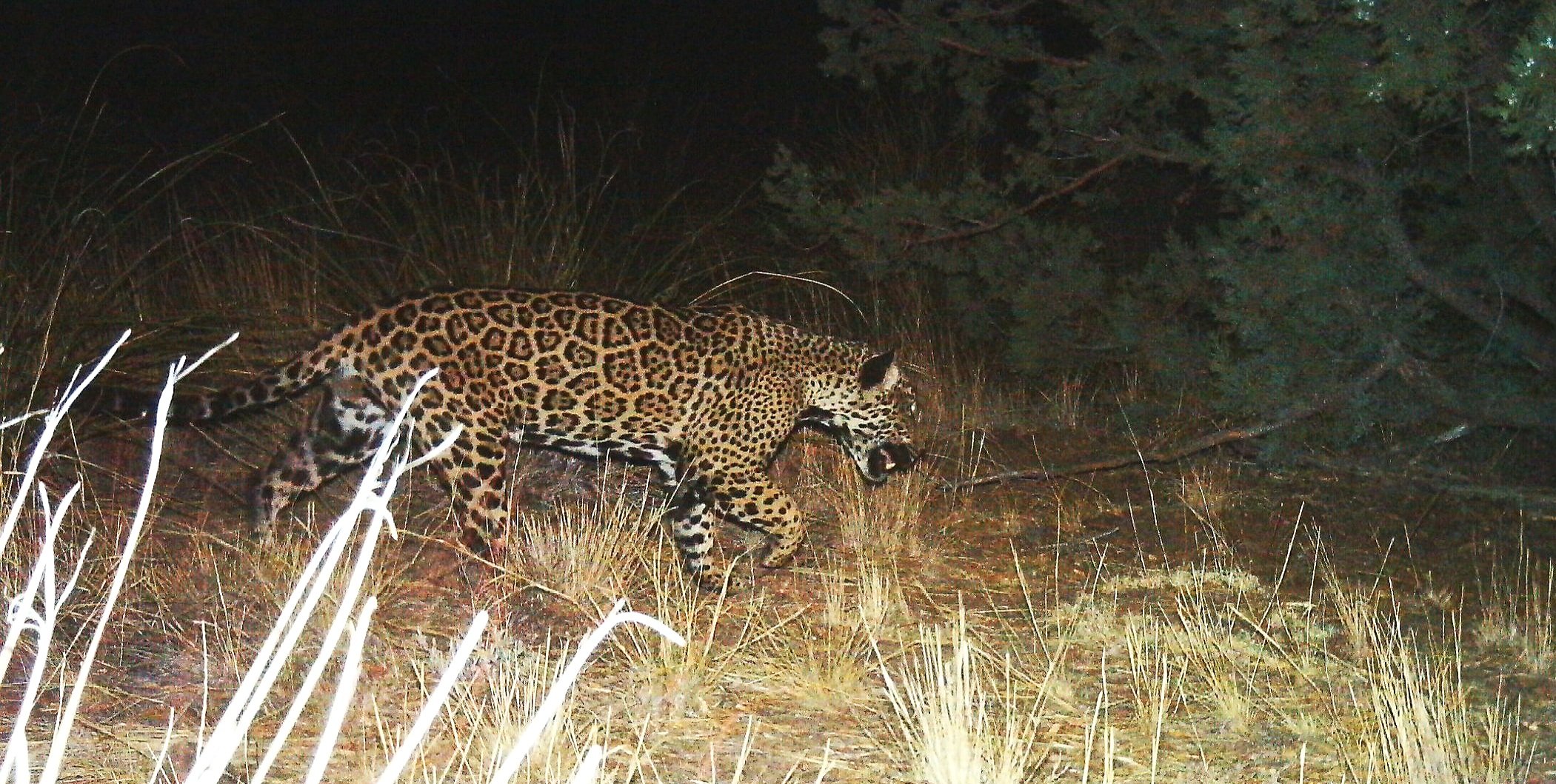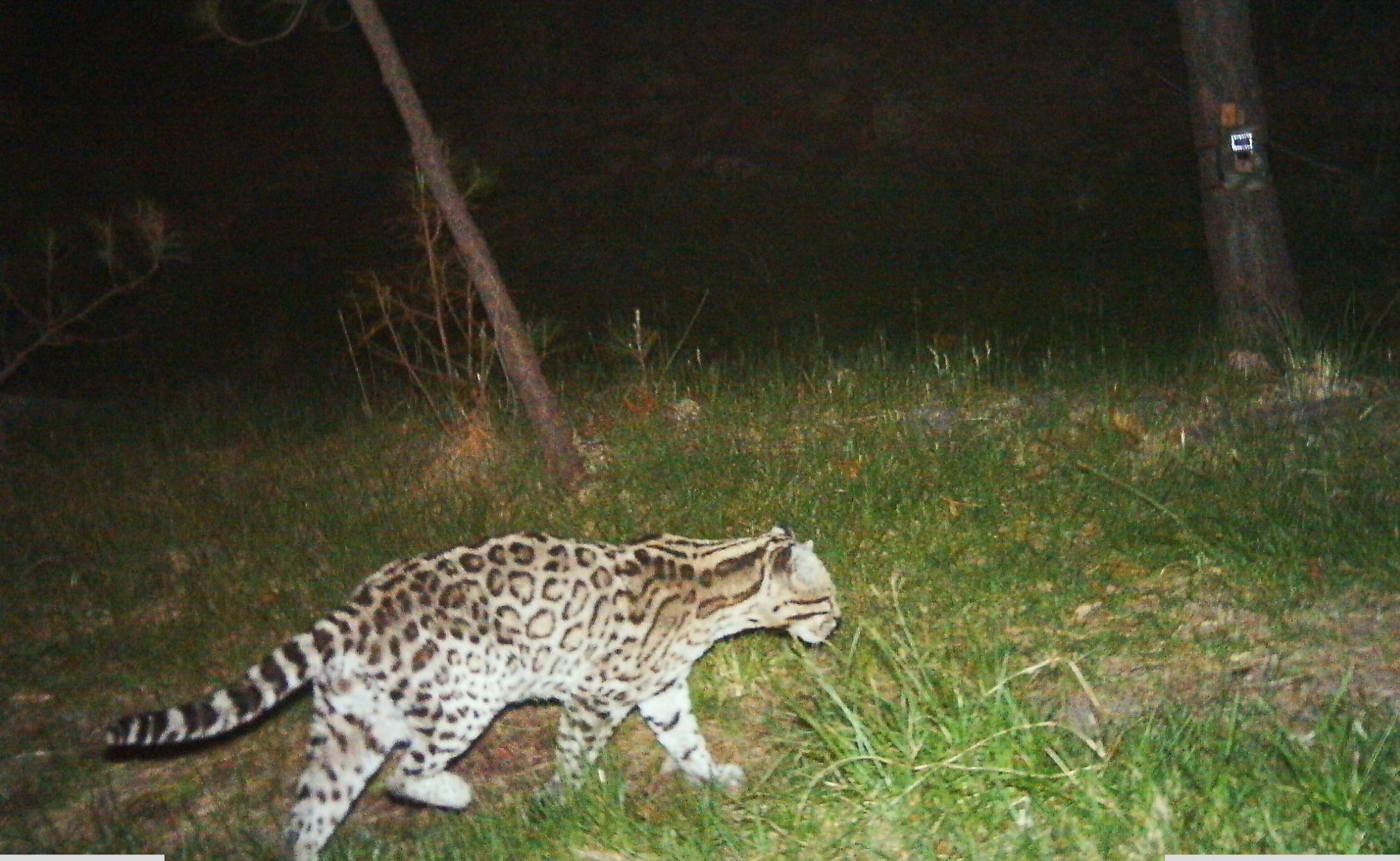Meet The Cats
Santa Rita Jaguar
The Santa Rita Jaguar was first detected in the Whetstone Mountains by houndsman Donnie Fenn in 2011. In 2012, the UA Jaguar and Ocelot Monitoring Project first detected the same male jaguar in the Santa Rita Mountains, 50 miles north of the US/Mexico border. The UA Jaguar and Ocelot Monitoring Project obtained photo and video detections, and genetically verified scats which were analyzed in the UA Culver Conservation Genetics Lab. The Santa Rita jaguar was detected by the UA Monitoring Team and the UA Citizen Science Monitoring Team over 125 times during the course of the three-year project. In 2022, the Santa Rita jaguar was detected in Mexico.
-
The Santa Rita Mountains are about 10 miles south of Tucson. They include approximately 215 square miles of area.
-
UA field survey team detected a single male jaguar in the Santa Rita Mountains at 23 different camera sites, an average of once every week for the duration of the project. This data included 122 photo images (2012-2015) and 8 video detections (2013-2015).
18 genetically verified scat detections were analyzed in the UA Culver Conservation Genetics Laboratory.
Huachuca Jaguar
The Huachuca Jaguar was first photo detected in November 2016 by a Customs and Border Patrol camera. As the male jaguar roamed the entire Huachuca range, the UA collaborated with Fort Huachuca Ecological Servies to monitor the jaguar. During 2017, the UA Citizen Science Monitoring Team obtained 9 detections of the jaguar. Unfortunately, the remains of the Huachuca Jaguar were confirmed to be found in Sonora, Mexico in 2018. During the research, the UA collected a single scat. The scat was genetically verified and analyzed in the UA Culver Conservation Genetics Lab.
-
The Huachuca Mountains are collectively managed by the USFS (Coronado National Forest), the US Army (Fort Huachuca) and private land. The combined regions of the Huachuca Mountains include approximately 110 square miles.
-
The University of Arizona photo-detected the Huachuca Jaguar 8 times while it was on the landscape in the Huachuca Mountains. Additionally, a single scat was collected and genetically verified jaguar scat. The scat was analyzed in the UA Culver Conservation Genetics Lab.
Chiricahua Jaguar
The Chiricahua Jaguar was first detected by our BLM/Citizen Science collaborators in late 2016. To date, the UA Citizen Science Monitoring Team has collected approximately 50 photo and video detections documenting the movement of this male jaguar throughout the entire Chiricahua Complex.
-
The Chiricahua Complex includes multiple mountain ranges linked together with wildlife travel corridors. Monitoring the Chiricahua Complex is a large undertaking with an expanse that extends over 700 square miles.
-
The UA citizen science team has obtained approximately 50 photo and video detections in the Chiricahua Complex from late 2016 to present. Multiple detections have been obtained with our Bureau of Land Management/Citizen Science collaborators.
Huachuca Ocelot
The Huachuca Ocelot, aka Ocelot #3, was first detected in 2011. The UA Jaguar and Ocelot Monitoring Team detected the ocelot in the Huachuca Mountains from 2012-2013.
-
The Huachuca Mountains are collectively managed by the USFS (Coronado National Forest), the US Army (Fort Huachuca) and private land. The combined regions of the Huachuca Mountains include approximately 110 square miles.
-
The UA Jagaur and Ocelot Monitoring Team obtained two photo detections of ocelot #3.
Huachuca Ocelot
The Huachuca Ocelot, aka Ocelot #4, first appeared on the landscape in 2012. The UA Jaguar and Ocelot Monitoring Team began photographing the ocelot in 2013. Since that time, the UA Citizen Science Monitoring Team has continued the work. To date, this male ocelot has been photo detected for over 10 years with a total of 43 detections. (2013-present)
-
The Huachuca Mountains are collectively managed by the USFS (Coronado National Forest), the US Army (Fort Huachuca) and private land. The combined regions of the Huachuca Mountains include approximately 110 square miles.
-
The Huachuca Ocelot #4 has been photo detected by UA monitoring teams over 40 times since 2013.
Santa Rita Ocelot
The Santa Rita Ocelot, aka Ocelot #5, was first detected by the UA Citizen Science Team in 2013. The male ocelot was detected throughout the Santa Rita Mountains seven times from 2013-2014. The presence of the Santa Rita ocelot (aka ocelot #5) is the only ocelot detected in the Santa Rita Mountains to date.
-
The Santa Rita Mountains are about 10 miles south of Tucson. They include approximately 215 square miles of area.
-
The UA Citizen Science Monitoring team first detected the Santa Rita Ocelot (Ocelot #5) in 2013. While the ocelot remained in the Santa Rita Mountains, the UA citizen scientists obtained 7 photo detections from 2013-2014.







